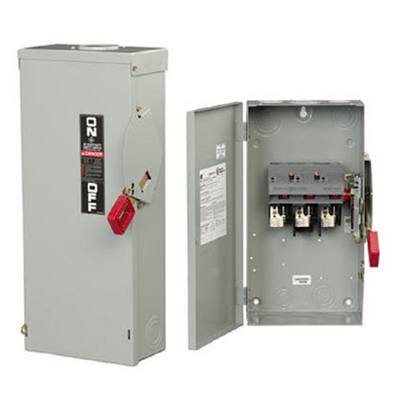What are the Different Types of Electrical Disconnect Switches?
What are the Different Types of Electrical Disconnect Switches?
Electrical disconnects are an essential component of electrical systems, providing a means of isolating power sources for maintenance, repair, and emergency situations. There are various types of electrical disconnect switches available, each with its own set of features and applications.
In this blog post, we’ll explore the different types of electrical disconnect switches, their functions, and their applications.
What is an Electrical Disconnect Switch?
An electrical disconnect is a switch that is used to isolate electrical equipment from its source of power. The disconnect is an essential component of any electrical system as it allows workers to safely perform maintenance and repair tasks without the risk of electrocution or other electrical hazards. In this blog post, we will explore the concept of electrical disconnects in more detail, answering some of the most frequently asked questions about these important devices.
Types of Disconnect switches:
Knife Switches:
Knife switches are one of the oldest and simplest types of disconnect switches. They are composed of two metal blades that are connected at one end, with a handle or lever that rotates around a pivot point. When the lever is moved to the open position, the blades are separated, interrupting the electrical circuit. Knife switches are typically used in low-voltage applications and are not suitable for high-current loads.
Circuit Breaker:
Circuit breakers are another common type of electrical disconnect switch that is widely used in commercial, residential, and industrial applications. They are designed to trip or disconnect power to a circuit when an overcurrent condition occurs, such as a short circuit or overload. Circuit breakers can be manually operated or automatically triggered by an electrical control system.
Fusible Switches:
Fusible switches are designed to protect equipment from damage caused by short circuits or overloads. They consist of a switch mechanism and a set of fuses that can be replaced when they are blown. Fusible switches are commonly used in industrial applications, such as motor control centers and other high-current loads.
Safety Switches:
Safety switches are designed to provide a means of disconnecting power to a circuit or equipment for maintenance or repair. They are typically used in commercial and industrial applications and are required by code to be installed in specific locations, such as near the main service panel or at the entrance to a room where electrical equipment is housed. Safety switches can be operated manually or remotely and can be designed for various current ratings and voltage levels.
Rotary Disconnect Switches:
Rotary disconnect switches are designed for use in high-current applications where a simple on/off switch is not sufficient. They are commonly used in motor control centers and other industrial applications to switch power to large motors or equipment. Rotary disconnect switches are designed with multiple contacts, allowing for the safe disconnection of power from multiple sources.
What is the purpose of an electrical disconnect?
The purpose of an electrical disconnect is to isolate electrical equipment from its source of power. This allows workers to safely work on the equipment without the risk of electrocution or other electrical hazards.
What types of electrical disconnects are there?
There are several types of electrical disconnects, including:
- Fused disconnects: These disconnects have fuses that will blow if there is an overcurrent or short circuit.
- Non-fused disconnects: These disconnects do not have fuses and rely on the equipment’s overcurrent protection.
- Circuit breaker disconnects: These disconnects have circuit breakers that will trip if there is an overcurrent or short circuit.
Where are electrical disconnects typically located?
Electrical disconnects are typically located near the electrical equipment that they are designed to isolate. They can be located inside or outside of buildings, depending on the application.
How are electrical disconnects installed?
Electrical disconnects are typically installed by a licensed electrician. The installation process involves connecting the disconnect to the electrical equipment and to the power source, and ensuring that all wiring is properly connected and secured.
What are some important safety considerations when working with electrical disconnects?
- When working with electrical disconnects, it is important to follow proper safety procedures to avoid electrical hazards. Some important safety considerations include:
- Always assume that the power is on until you have verified that it is off.
- Use appropriate personal protective equipment, such as insulated gloves and safety glasses.
- Follow proper lockout/tagout procedures to ensure that the equipment cannot be energized accidentally.
Key Takeaways
In conclusion, electrical disconnects are an essential component of any electrical system, allowing workers to safely perform maintenance and repair tasks without the risk of electrocution or other electrical hazards.
If you are looking for a trusted electrical parts distributor, look no further than Triple C Electric. With years of experience and a commitment to quality products and excellent customer service, Triple C Electric is your go-to source for all your electrical needs. Contact us today to learn more about our products and services or to place an order.



